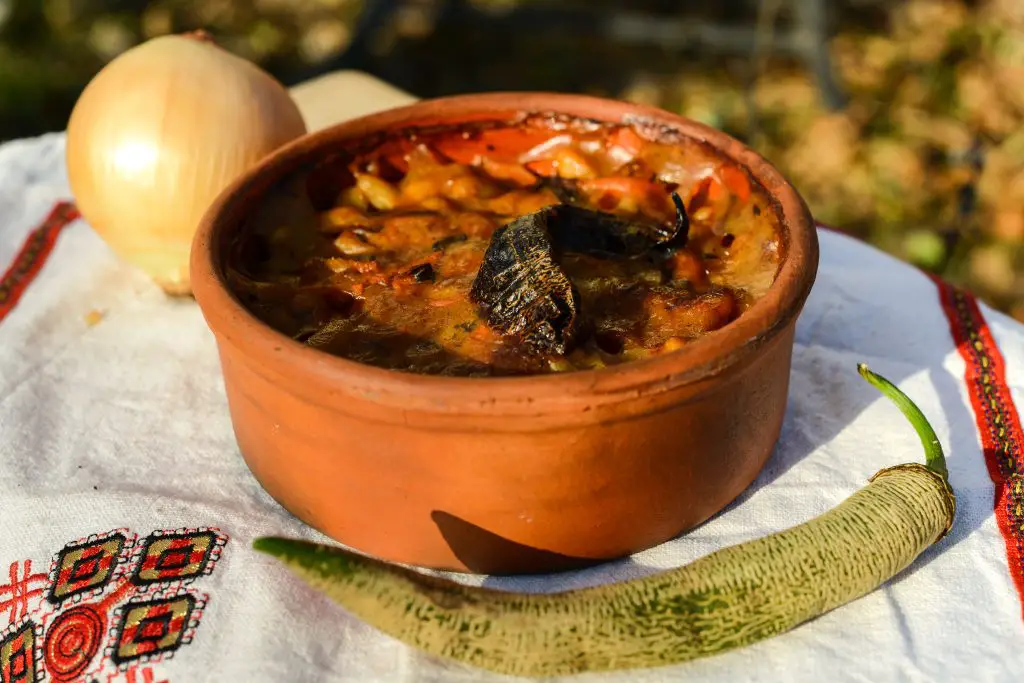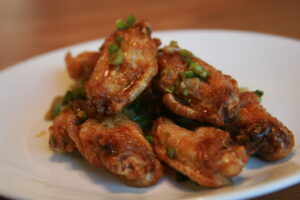North Macedonia, a small but culturally diverse country nestled in the heart of the Balkans, is renowned for its unique and delicious traditional cuisine. With a history that spans centuries, North Macedonian food has evolved into a delightful fusion of Mediterranean, Balkan, and Turkish influences, creating a tapestry of flavors that reflect the country’s rich heritage. In this article, we will take a deep dive into North Macedonia’s traditional food, exploring its ingredients, preparation methods, and the significance of these dishes in the country’s culture and history.
A Culinary Mosaic
North Macedonian cuisine is a melting pot of influences, shaped by centuries of historical and cultural interactions. Its culinary identity has been influenced by the Ottoman Empire, neighboring countries, and indigenous traditions. The result is a diverse and flavorful menu that showcases the best of the region’s produce and culinary techniques.
Key Ingredients
Peppers: North Macedonia is famous for its pepper-based dishes, and the red pepper, in particular, holds a special place in its cuisine. Dishes like ajvar, a roasted red pepper and eggplant spread, and tavče gravče, a traditional bean stew, feature red peppers as a central ingredient.
Meats: Meat plays a significant role in North Macedonian cuisine. Beef, pork, lamb, and poultry are commonly used in various dishes. Kebapi, small grilled sausages made from minced meat and spices, are a beloved street food.
Dairy: Dairy products are an essential part of the diet, with yogurt and white cheese being common accompaniments to many dishes. Kajmak, a creamy dairy spread, is also a popular addition to meals.
Bread: Bread is a staple in North Macedonian cuisine, and you’ll find various types of bread, including lepinja (flatbread) and pita, served alongside many meals.
Traditional Dishes
Tavče Gravče: Often referred to as the national dish of North Macedonia, tavče gravče is a flavorful bean stew cooked with red pepper, onions, and spices. It’s typically baked in a clay pot and served with fresh bread and yogurt.
Ajvar: This roasted red pepper and eggplant spread is a versatile condiment that can be enjoyed with bread, as a dip, or as a side dish. It’s a beloved accompaniment to many meals.
Shopska Salad: A fresh and vibrant salad made with tomatoes, cucumbers, bell peppers, onions, and white cheese, typically topped with a dressing of oil and vinegar. It’s a refreshing and colorful starter.
Kebapi: These small grilled sausages made from minced meat and spices are a popular street food and a staple in North Macedonian cuisine. They are often served with bread and onions.
Sarma: Cabbage or grape leaves stuffed with a mixture of ground meat and rice, then simmered in a tomato-based sauce. Sarma is a hearty and comforting dish enjoyed on special occasions.
Pita: A pastry filled with various ingredients, pita can be sweet or savory. One of the most famous savory varieties is the burek, a flaky pastry filled with minced meat, cheese, or spinach.
Pindjur: Another delicious condiment, pindjur is a thick tomato and pepper sauce, often flavored with garlic and spices. It’s a great accompaniment to grilled meats and bread.
Gravče na tavče: A variation of tavče gravče, this dish features beans cooked with sausages, often served in the same clay pot it’s cooked in, creating a rustic and flavorful meal.
Mastika: A popular traditional liquor made from the resin of the mastic tree, mastika is often enjoyed as an aperitif or after a meal.
Rakija: This strong fruit brandy is a popular alcoholic beverage in North Macedonia. It’s often homemade and served on various occasions, including celebrations and gatherings.
Culinary Traditions and Festivals
North Macedonian culinary traditions are deeply intertwined with the country’s culture and history. Many dishes have been passed down through generations, with recipes often kept as cherished family secrets. Food plays a significant role in social gatherings, celebrations, and festivals, bringing people together to share in the joy of delicious meals.
One such celebration is the Ilinden Festival, held on August 2nd, which commemorates the Ilinden Uprising of 1903. During this festival, traditional dishes are prepared and shared, and communities come together to honor their heritage through food, music, and dance.
Weddings are another occasion where traditional North Macedonian food takes center stage. A typical wedding feast might include a variety of dishes like sarma, kebapi, and pita, all prepared with love and care to symbolize the joining of two families.
In addition to these special occasions, North Macedonian cuisine is celebrated throughout the year in local restaurants, street food vendors, and home kitchens. Visitors to the country can immerse themselves in the culinary traditions by sampling these dishes and exploring the vibrant food scene.
North Macedonia’s traditional food is a celebration of its rich history and cultural diversity. From the flavors of roasted red peppers to the comforting warmth of bean stews, North Macedonian cuisine offers a taste of the Balkans with a unique twist. The country’s culinary traditions are deeply rooted in its culture, and sharing a meal with locals is an excellent way to experience the warmth and hospitality of North Macedonia. Whether you’re savoring ajvar with fresh bread or enjoying a plate of kebapi by the street, North Macedonian cuisine is sure to leave a lasting impression on your palate and your heart.
Regional Variations
While we have explored some of the key dishes and ingredients that define North Macedonian cuisine, it’s important to note that the country’s culinary landscape is diverse, with regional variations adding even more depth to its food culture. Here are a few examples of regional specialties:
Ohrid: Located on the shores of Lake Ohrid, the city of Ohrid is known for its unique take on North Macedonian cuisine. Freshwater fish, such as trout and carp, are commonly featured in dishes like Ohrid-style fish soup and grilled fish with garlic sauce.
Bitola: The city of Bitola is famous for its street food scene, particularly its wide variety of savory pies, known as piti. These pies come in many flavors, including meat, cheese, and pumpkin, and they make for a delightful on-the-go snack.
Skopje: As the capital city, Skopje has a diverse culinary scene that reflects the country’s melting pot of influences. You’ll find a wide range of international cuisines alongside traditional North Macedonian dishes in the city’s restaurants and cafes.
Strumica: Located in the southeastern part of the country, Strumica is known for its fruit orchards, particularly its sweet, juicy strawberries. Visitors can enjoy strawberry-based desserts and jams, as well as dishes featuring locally grown produce.
Tikvesh: This region is known for its vineyards and wine production. You can explore local wineries and taste wines made from indigenous grape varieties, such as Vranec and Smederevka, along with delicious food pairings.
Culinary Experiences
To truly appreciate North Macedonian traditional food, consider participating in culinary experiences that allow you to engage with local cuisine on a deeper level. Here are some suggestions:
Cooking Classes: Join a cooking class led by a local chef or home cook to learn how to prepare traditional North Macedonian dishes. You’ll get hands-on experience in the kitchen and gain insights into the techniques and ingredients used.
Food Tours: Take a food tour of a North Macedonian city or region to sample a wide variety of dishes and flavors. Knowledgeable guides can introduce you to hidden culinary gems and local specialties.
Visit Local Markets: Explore bustling local markets where you can discover fresh produce, dairy products, spices, and other ingredients used in North Macedonian cooking. Engage with vendors and taste local treats.
Rural Homestays: Consider staying in a rural guesthouse or homestay where you can enjoy homemade traditional meals prepared by your hosts. This provides an authentic and immersive culinary experience.
Wine Tasting: North Macedonia’s wine regions offer excellent opportunities for wine tasting. Visit vineyards and wineries to sample local wines paired with traditional snacks.
Festivals and Events: Plan your trip to coincide with local festivals and events that celebrate food and culture. These gatherings often feature traditional dishes, music, and dance performances.
Sustainability and Preservation
As North Macedonia’s traditional food gains recognition both locally and internationally, efforts to preserve and promote its culinary heritage are on the rise. Sustainable farming practices, the use of local ingredients, and the preservation of traditional recipes are all important aspects of maintaining the authenticity of North Macedonian cuisine.
Additionally, organizations and culinary enthusiasts are working to document and share traditional recipes and cooking techniques to ensure that future generations can continue to enjoy these unique flavors.
In conclusion, North Macedonia’s traditional food is a delightful blend of history, culture, and flavor. With its diverse range of dishes, rich ingredients, and regional variations, it offers a culinary journey that is both exciting and satisfying. Whether you’re exploring local markets, enjoying a home-cooked meal, or sampling street food, the flavors of North Macedonian cuisine are sure to leave a lasting impression on your taste buds and provide a deeper understanding of the country’s heritage. So, embark on a culinary adventure and savor the delicious traditions of North Macedonia.




